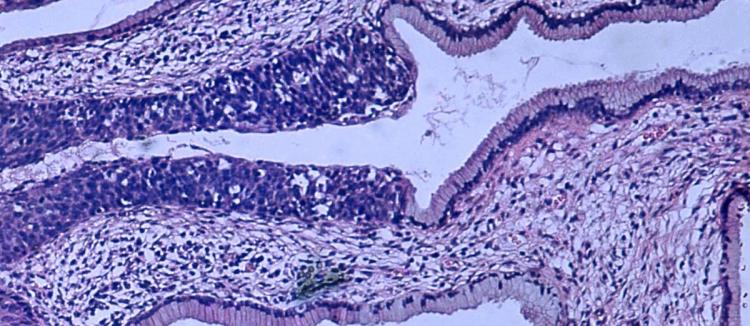Neoplasms that develop in the tissues of the cervix are the most common gynecological disease. Treatment of such tumors always begins with early diagnosis and determination of their type. The treatment method is always selected according to the type of tumor.
What are the different types of cervical cancer?
Since 2003, doctors around the world have been using a classification system developed by the World Health Organization to determine the type of cervical tumors. Based on their histological structure, such neoplasms are usually divided into precancer, squamous cell type of oncology and adenocarcinoma.
Each of the above subgroups includes different types of tumors, which have different signs and structural features. Today, foreign medicine has all the necessary techniques to quickly cure any type of cancer. Today it is based on the prevention of the occurrence of the disease, as well as on the precise determination of the type of neoplasm. For this purpose, only the latest medical inventions are used abroad.
Precancerous diseases of the cervix
The occurrence of tumors on the cervix can be preceded by precancerous processes that develop in the epithelial layer of the organ under the influence of a number of unfavorable factors. If diagnosed untimely and untreated, these diseases can progress; abnormal cells in this case mutate and become malignant.
There are such precancerous diseases:
- pathology of the epithelial layer;
- cervical cancer in sutu.
A characteristic feature of this condition is the penetration of pathology into the deep layer of the cervix. It is noteworthy that when precancer is detected, the goal is to detect the disease in a timely manner and prevent its progression.
Characteristics of squamous cell carcinoma of the cervix
This type of oncology is also called invasive cervical cancer. It is found in 80% of cases of cervical cancer. Such neoplasms grow from epithelial cells that cover the outer part of the organ. Marginalization (malignancy) of healthy cells occurs due to the penetration of the papilloma virus or HPV into the body. Scientists already know more than 18 varieties of this virus, which can cause the development of various tumors in a woman’s reproductive organs.
The presence of such neoplasms may not cause any discomfort in the patient. In rare cases, the patient may complain of leucorrhoea or bloody discharge from the genitals. Later, these symptoms are joined by functional disorders of urination and defecation.

There are these types of squamous cell carcinoma:
- Well-differentiated or keratinizing cervical cancer - occurs quite rarely. The prognosis for cure for this type of cancer is favorable if it is detected early.
- Differentiated or non-keratinizing cervical cancer - one of the most common and dangerous types of cancer. Often precedes the development of a disease such as cervical cervical cancer. The symptoms are pronounced.
- Poorly differentiated cervical cancer - is the most aggressive disease. Doctors still do not know the exact reasons for the development of this form of cancer.
- Basaloid type squamous cell carcinoma diagnosed in 15% of patients. It is a dangerous type of oncology, which is quite difficult to treat when it is in an advanced state.
- Warty or condylomatous cancer When diagnosing, it requires differentiation from papilloma or condyloma. This disease is not as dangerous as other forms of cancer. For this reason, the disease can be successfully cured if detected early.
- Papillary or papillary cervical cancer occurs in the form of papillary neoplasms that are covered with epithelium. This type of cancer is characterized by excessive abnormality of cancer cells.
Treatment methods for any type of cancer in this case depend on what results a histological examination of tumor cells shows. Only after the form of cancer has been established and the stage of tumor development has been determined, effective treatment can begin.
Characteristic features of cervical adenocarcinoma
This type of oncology is rarer. Adenocarcinoma is diagnosed in only 20% of patients. Over the past few years, cases of detection of the disease in young women aged 30 have become more frequent. This form of oncology grows in the glandular structures of the organ. For this reason, the disease is called glandular cervical cancer.

The characteristic features of adenocarcinoma are:
- At endophytic cervical cancer the neoplasm develops in the isthmus of the organ. The tissues of the outer part of the pharynx acquire a concave and loose shape. This type of cancer is difficult to diagnose and for this reason it is not easy to treat.
- At exophytic cervical cancer - tumors have a weak manifestation of the development of a malignant process. They arise in the vaginal section of the organ. This disease is very easily diagnosed with routine gynecological palpation. Due to the fact that the disease is easy to diagnose, it has a positive prognosis for complete recovery.
- For mixed tumors Characteristic features of both types of adenocarcinoma. These types of tumors are the least commonly diagnosed.
It is noteworthy that adenocarcinomas can reach very large sizes. Symptoms in this case are often completely absent. Because of this, this type of cancer is very difficult to diagnose in the early stages of its occurrence. As the tumor grows and cancer cells enter the bloodstream, damage to the lymphatic system occurs, which makes treatment of the pathology more difficult.

Rare types of cervical cancer
No more than 1.5% of patients suffer from rare types of cervical cancer. However, it is precisely such neoplasms that are considered the most life-threatening for the patient.
Rare types of cancer have the following characteristic features:
- At mucin-producing cancer doctors detect the presence of mucin in tumors. In this case, tumors do not form glandular tissue. This type of cancer occurs in 30% of cases. The disease is characterized by a very aggressive course, which is why it requires special attention from the attending physician.
- Pathology develops from neuroendocrine connections. They can be either mixed or of the same type. Mixed neoplasms may have a glandular structure. The diameter of such a neoplasm can reach up to 10 centimeters.
- At clear cell cervical cancer There is a lack of sensitivity to hormone therapy. Most often, such tumors occur in women over 40 years of age. American scientists have established an interesting fact. Girls born to mothers who took the drug Diethylstilbestrol during pregnancy have a significantly increased risk of developing this clear cell cervical cancer. It is noteworthy that due to the ease of diagnosis of these tumors, they are quite easy to treat.
Features of treatment of different types of cervical cancer abroad
Today, foreign medicine has all the necessary methods for early diagnosis of any type of cervical cancer. Only foreign clinics use innovative medical equipment and medications of the latest generation.
To surgically remove a tumor, they use gentle and minimally invasive techniques, thanks to which doctors do not harm healthy organs and tissues.
If we talk about preventing the occurrence of oncology, then all the efforts of doctors are aimed at preventing the penetration of HPV into the female body. For example, all Israeli women are required to be vaccinated against this virus. By the way, Israel can be considered an example of the best development of medicine throughout the world. Here they successfully achieve healing from even the most complex forms of oncology. At the same time, they do not exceed the cost of treatment in European countries and are affordable for many patients. Therefore, thousands of patients visit this country every year.
